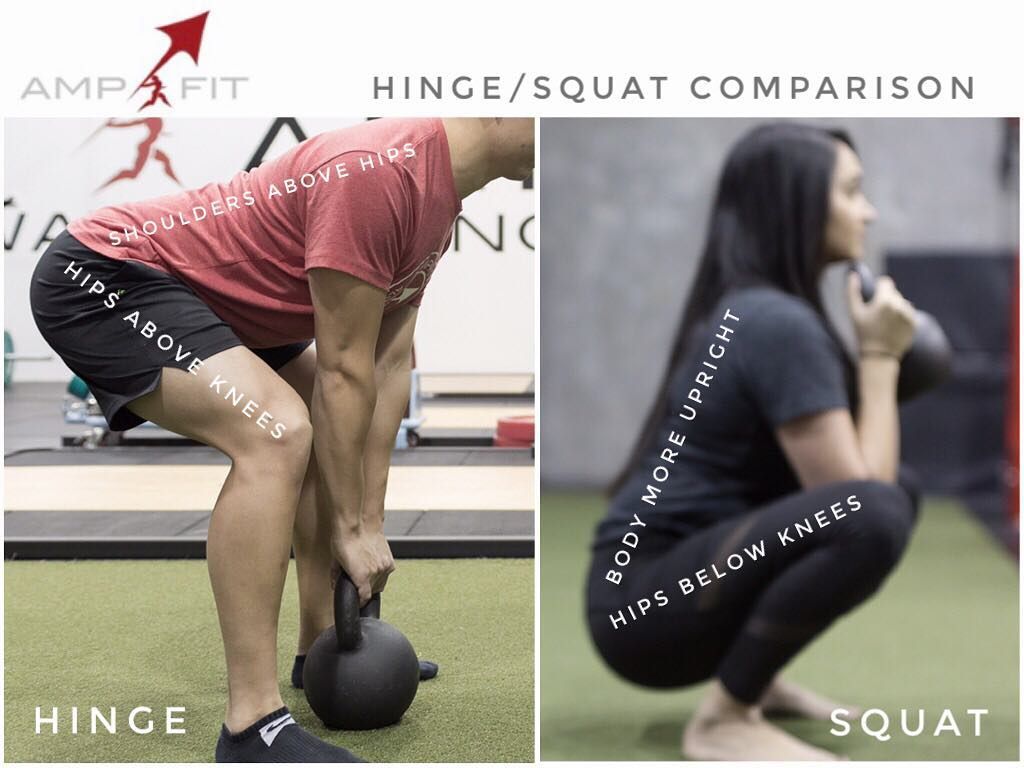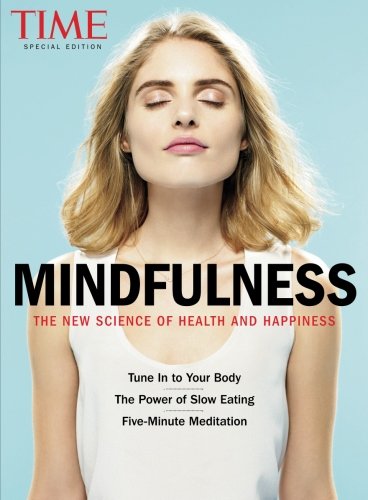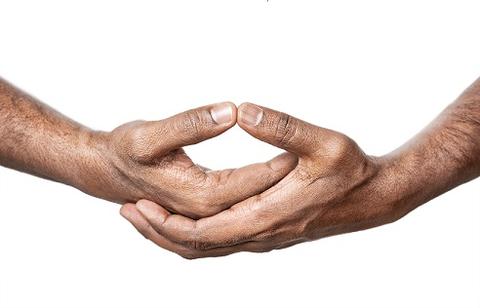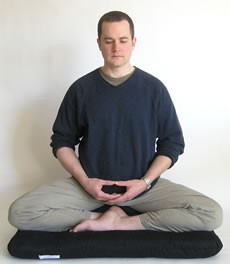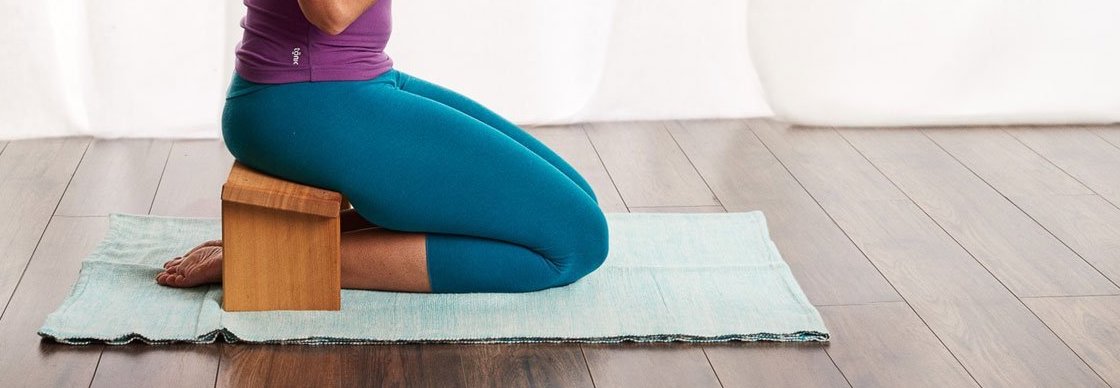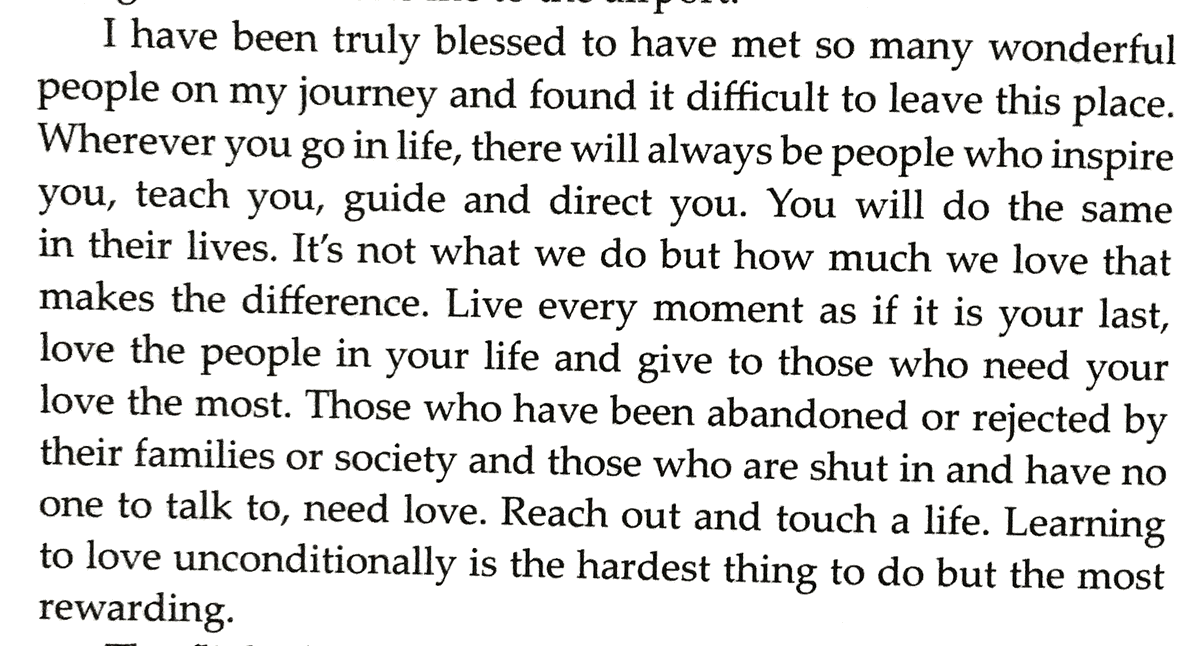1 like = 1 tip for your meditation practice https://twitter.com/vgr/status/1205357296714280962
1. In the beginning, consistency beats quantity. Practice for the minimum amount of time that you can reliably maintain. 1-5 minutes every day > many minutes irregularly.
2. Meditation can be fun. Practice in a way that optimizes for fun, pleasant, enjoyable, relaxing.
3. Try to end meditation sessions on a good note, feeling happy and relaxed. A few strategies: shorter sessions; ending with loving kindness / nurture positive techniques; lying down for a few moments in total relaxation.
4. Motivating yourself is a key skill you’ll need in meditation and life. Know why you want to practice and how to remind yourself of it, especially specific phrases or images.
5. Meditate with your body, not your head. Use your posture, your breathing, your muscles, your awareness to stay in your body.
6. Relaxation is a technical term; learn to relax. We unconsciously build muscular tension throughout our days and our lives. But we can apply awareness and intention towards gradually relaxing that tension.
7. Smile. Smiling releases chemicals that make you feel good. It’s okay to fake it until you make it.
8. Breathe slowly. You can learn to breathe far, far more slowly than you are probably used to. Breathing slowly will slow down your thinking and bring you into your body.
9. Breathe into your abdomen rather than your chest. Once you’ve filled your abdominal area with oxygen you can optionally breathe into your chest as well. Chest-first/chest-only breathing is bad.
10. Breathe through your nose.
11. Okay this might be heretical but here goes: if you're looking to stress less / be 10% happier, you're probably going to get more bang from your buck from exercising, sleeping well, and eating right. Take care of your body
12. Seriously, go do some basic cardio. Running is free, yo, just like meditation.
13. To make it more fun: experiment with practicing meditation immediately before exercising. Experiment with practicing immediately after exercising. Notice if either ordering affects/improves your qualitative experience of either activity
14. Practice using a gratitude journal for a time (1-3+ months). It will help you learn to feel good emotionally in your body, a skill that will come in handy later. Again, this will probably get you more bang for your buck early on than vanilla mindfulness practice
15. Odds are, whether you're brand new or an old hat, you’re not doing nearly enough compassion practice. Learn + consistently do loving kindness / compassion practice or similar techniques. Again, these techniques have more power early on than e.g. following the breath
16. Meditation apps are great. @Brightmind_app is the best I’ve seen.
17. To my great sadness and boredom, loving-kindness techniques are often taught formulaically. Try the formulas, but be playful and experimental. The main point of practicing lovingkindness/positivity is to make you feel good emotionally in your body.
18. Feeling good physically and emotionally in your body matters. If you're doing all the things I mention (exercise, sleep, eating, lovingkindness) and still feel like crap, it might be a sign that you need to make behavioral and ethical changes in your life.
19. Meditation is a life-long journey. Plan to meditate for the rest of your life.
20. If you're going to be meditating for the rest of your life, you'll probably encounter Buddhism/other spiritual traditions. Be open + humble. Go to the source where possible + e.g. read Buddhist scriptures. They're pretty damn good. This site is a gem: https://accesstoinsight.org/
21. RE: ethics, Buddhism has a pretty great starting point: the 5 Precepts. Don't kill, don't steal, don't commit sexual misconduct, don't lie, and don't use intoxicating/addictive substances. These are ethical table stakes
https://www.accesstoinsight.org/ptf/dhamma/sila/pancasila.html
https://www.accesstoinsight.org/ptf/dhamma/sila/pancasila.html
22. OK, you're exercising and eating right and sleeping well and you're grateful and you're compassionate and you've improved your ethics, too. Now for the real good stuff: posture. Start meditation sessions by establishing good posture.
23. You don’t have to have perfect posture, but be sure you are learning about and improving your posture over the months and years of your practice. Good posture will help you take care of your body physically, feel good emotionally, stay in your body, and be focused.
24. If you remember nothing else about posture, remember this: upright + relaxed.
Start sessions by straightening up and settling in: making your spine as long as you can, and relaxing your muscles. Upright body, alert mind; relaxed body, relaxed mind.
Start sessions by straightening up and settling in: making your spine as long as you can, and relaxing your muscles. Upright body, alert mind; relaxed body, relaxed mind.
25. In whatever position you sit in, maximize surface area between the lower half of your body and the ground. Feel the points where you contact the ground and enjoy the relaxation and security that comes from those points.
26. In all positions except horizontal / supine / lying down, make sure your hips are above your knees. These aren't good positions for formal practice in stillness but this image will help you see what that looks like.
27. Balance your body from front/back and side/side. Move like a pendulum to the extremes, back and forth, and find the midpoint.
28. Open your chest, like you’re confident and proud. Notice that opening your chest makes you feel confident and proud. Enjoy that.
29. Bring your neck forward, and notice it’s very hard to breathe abdominally. Bring your neck back, and notice it’s easy to breathe abdominally. Keep your neck in this position.
30. Elevate the top of your spine. Your chin will tuck naturally as a side effect. Avoid looking like the meditator in Time magazine’s mindfulness special. This head position is a surefire recipe for you to think a whole bunch of thoughts (read: not be in your body).
31. Tuck your tailbone. This video seems pretty decent:
32. A good hatha yoga teacher can help you learn these postural alignments. For fast feedback, practice moving in and out of good posture as they narrate what’s happening.
33. Go to a yoga class - hatha yoga is a great complement to meditation. As I understand it a main goal of hatha yoga is to help you with seated meditation, so that you can to sit still in good posture for a long time.
34. They might look funny or feel weird, but use mudras - hand positions. Here's a good, simple one.
35. If you can, sit in full lotus position, or half-lotus, do it. To a close approximation these are the best meditation postures.
38. If you can't sit in seiza, sit forward in a chair (don't let your spine touch the back of the chair) or lie down. Just don't fall asleep. Really, don't fall asleep.
39. Remember that investing in practicing and establishing good posture isn't wasting your time, just like improving your ethics, exercising, eating right, sleeping well, practicing gratitude + compassion weren't wastes of your time.
40. You've made behavioral changes, sat down to meditate, and established good posture. Commit to doing a specific meditation technique for a specific period of time - the whole session, or part of the session (then switch techniques).
41. If you get distracted during that time, you probably stumbled into one of the Five Hindrances (yep, the Buddhists love their numbered lists). Memorize these bad boys: want, hate, agitation, stupor, and doubt. https://www.accesstoinsight.org/lib/authors/nyanaponika/wheel026.html
42. Having memorized the Five Hindrances, learn to recognize them in your experience. Learn which shows up most frequently for you and why, and learn what works for you to break through them.
43. There are many, many strategies for breaking through the hindrances, and you'll have to find what works for you, but simple mindfulness helps with all of them. If a hindrance comes back, fall back to being mindful.
44. Here's what typically works for me for each hindrance. For want, I notice that I'm craving the thing and think about (yes, think) the ways in which that thing is not that good or satisfying. E.g. food doesn't last a very long time.
45. For hate, I do lovingkindness practice. I remember that the person I'm annoyed at / angry at / hateful towards wants to be happy. Or if that's hard, general lovingkindness towards anyone and everyone helps.
46. For worry/anxiety, I slow my breathing down and/or say nice things to myself (positive self-talk) and/or do mindful review. I blogged about Mindful Review here: https://tasshin.com/blog/catalyzing-positive-behavior-change-with-mindful-review/
47. Most of the hindrances show up in multiple ways. E.g. stupor can be sleepiness or laziness. For sleepiness, I open my eyes, straighten my spine. Rinse and repeat.
48. OK, sometimes opening your eyes and straightening your spine isn't enough for sleepiness. That's when I break out the big guns. Really, really, really slowing down the breathing - in particular extending the exhale can help you generate energy and wakefulness.
49. Here's an early video of my meditation teacher teaching this technique:
50. Stupor can also manifest as laziness. Use your motivation skills here. Remember why you're practicing.
51. Feel free to get dramatic + big picture here. Pep talks and severe talking-tos are great. I typically recall that our whole species + planet are at risk of collapse and extinction. Mindfulness is helping me become a leader that can face these problems.
https://tasshin.com/blog/the-problems-we-face/
https://tasshin.com/blog/the-problems-we-face/
52. Doubt in its extreme form is thinking "this is bullshit." In a less extreme form it's subtly not really believing that meditation is a good use of your time. Again, reason yourself into remembering that meditation and mindfulness are good in general and for you in particular.
53. Take time off the cushion to really let these 5 hindrances sink in conceptually. Recall times when they've been present for you, and what that was like. Write down a plan: if I experience desire, I will... if hate, I will... if worry, I will... if stupor... if doubt...
54. Celebrate! If you can reliably: not be a jerk, do good things, take care of your body, feel good emotionally, sit down to meditate w/good posture + notice/cut through the hindrances- you will increasingly find a new kind of joy + satisfaction from integrity/awareness.
55. All of that hard work was not wasted. But it is basically preparation for meditating - intending to do a technique, and being able to stay with it.
There are a lot of techniques out there. Learn about them! Try them all!
There are a lot of techniques out there. Learn about them! Try them all!
56. Having learned about the many, many meditation techniques there are out there, try making your own meditation techniques. Be creative and playful.
57. Then again, you can also keep it simple. Let following the breath be the default technique*.
*default when you have done everything else mentioned in this thread, including and especially cutting through the hindrances
*default when you have done everything else mentioned in this thread, including and especially cutting through the hindrances
58. At this point the breath becomes a really, really important tool. You're already breathing into your abdomen, and slowing your breathing, and you may have learned to energize it as well. Be playful in experimenting with different breathing techniques.
59. In addition to the technique in the video shared previously, try the Wim Hof technique, which is becoming more and more popular/well-known. This + other techniques will convince you intellectually + physically that the breath can alter your conscious experience dramatically.
60. Play with different points along this critical spectrum: passively "following" the breathing, and actively "manipulating" the breathing. Most Western mindfulness instruction errs towards "following"; counterbalance that by learning to "manipulate" or change the breathing.
61. Whichever strategy you take, whichever technique you do, avoid letting the breath become stale/static/repetitive.
62. Try to see if you can let the breath affect / flow through your whole body.
63. Learn to "breathe into" specific parts of your body. This can be as simple as bringing awareness to those parts of your body while you breathe, but can get more involved.
64. This is a good point to take time to re-investigate why you want to practice mindfulness, meditation, and spirituality. You might not have the same reasons for practicing that you did when you started.
65. Although self-oriented reasons for practice are valid and good, there are other, more wholesome motivations: relentless determination; compassion for all beings; doubt + confusion about basic issues to life + death; vigor and energy; faith and trust. Recognize + summon these.
66. A lot of these tweets are poor summaries of the technique my teacher teaches which I call the "Forall Method." You're at a place to benefit from reading the book I wrote to describe it: https://monasticacademy.com/seeds
67. You might also like this meditation handout I made that I give my students: https://docs.google.com/document/d/1-ok8YkdG5HphF10JQYR2SleIBZVIjRcYK19lzKKJ-tI/edit?usp=sharing
68. At this point, if you haven't already, you should also learn about concentration states and insight attainments. Know that these are easily confused and you'll want a good teacher to verify any that you find.
69. Find a coach or teacher to work with. Depending on how serious this is for you, they can be like a workout advisor or a all-inclusive spiritual teacher. In any case do due diligence internally + socially to make sure you trust them / they are trustworthy / they are qualified.
70. Here are some other ways to dramatically accelerate your practice. A tried and true method is "strong determination" sitting - commit to sitting in a specific posture for a specific period of time w/o moving. This helps you learn to work with physical pain, strong emotions
71. Another similar method is what @ShinzenYoung calls "trigger practice," "[exposing] yourself to a sight, sound, or physical-type body sensation that would tend to create a mental and/or emotional reaction within you." https://www.shinzen.org/trigger-practice/
72. Best methods of trigger practice that I've found is with Youtube. Sad, scary, even cringe-worthy YouTube videos work great. You can also use pleasant stuff like funny gifs and cat pics.
73. Shinzen's other Big Three "accelerator" is what he calls challenge sequences: https://shinzenyoung.blogspot.com/2012/08/working-smart.html
74. These challenge sequences point to the fact that increasingly, a goal of meditation practice is to have the mindfulness you cultivate during formal practice periods seep into the rest/whole of your day. Know that this is a goal, and that it may take years.
75. There are a few important strategies for practicing through the whole day. If you haven't already, take up a contemplative movement practice, like yoga, tai chi, or qi gong. These are designed to help you maintain + increase your mindfulness skill and power in motion + life.
76. Walking meditation is also great. Fast walking meditation, slow walking meditation, it's all good. Make time to practice in motion.
77. You can keep your meditation technique going throughout the day, even when you're not formally practicing. Simpler techniques work better for this - e.g. following the breath.
78. One approach is to use "micro-hits" - short periods of practice of 1+ minutes that you sneak into your day: at your desk, in the bathroom, in the parking lot, etc. As you normally do, commit to a specific technique for a specific time. Enjoy these practice sessions- have fun!
79. Another approach is "background practice" - keeping 20% of your attention on your technique throughout the day, while 80% is dedicated to the task at hand. You might be surprised that this can actually improve your performance at certain tasks.
80. Remember you're in this for the long haul. Schedule time each year for an extended period of practice. The typical goal is to do at least one silent weeklong meditation retreat with a qualified teacher each year. Plan ahead of time, then go do it!
81. You'll also benefit from finding a "sangha" or community of people that you can practice with on a more regular basis, e.g. for a couple of hours or more each week. Formal practice with other people helps hold you accountable and you also get to learn from others.
82. Have the humility to branch out into spiritual traditions that are unfamiliar and even uncomfortable to you. Be charitable and assume that practices + customs have reasons + benefits you might not be aware of.
83. Notice if there are any traditions or practices you are especially averse to. A very overly simplistic heuristic is that the more aversion to a spiritual practice you have, the more likely you are to benefit from it.
84. For example, having an altar. Someone else's altar is probably not going to resonate with you and may even turn you away from this time-honored tradition. But having a place with items that remind you why you're practicing is a tried-and-true method for hacking motivation.
85. Another example: chanting. Chanting can strike people in Western culture as weird, foreign, backwards or bad. But chanting in a group hacks motivation *and* concentration - especially w/chants that repeat the same phrase. Chanting is way easier than everything I describe here
86. Yep, I've had aversion to both altars + chanting in the past - and then benefitted from them. My example proves there's hope for you. Other powerful but aversion-generating spiritual technologies: bowing, generosity (donations), prayer, visualization, pilgrimages, community
87. In many respects, meditation is like exercise. If there’s a problem or something that’s confusing to you, transpose it to exercise. In most cases this mere transposition solves the “problem.” @DaronLarson is the master of this
88. Monastic communities are the ultramarathoners of meditation + spiritual practice. Visit a monastery to get inspired.
89. So much of this path has to do with inspiration; all of it has to do with friendship. As an early meditation teacher of mine, Frances Brown, said in her memoir: you will be inspired by others, and you will inspire others.
90. You're now in a position to inspire, help, and even teach others. Try teaching meditation + mindfulness to someone. You will find that this is a mutually supportive relationship, precious and sacred.
91. Consider the possibility that you are a bodhisattva, a saint, a being dedicated to the service to others. You don't go through this much challenge, put this much effort in, just for yourself. https://tasshin.com/blog/all-that-is-necessary-to-be-a-bodhisattva-is-to-want-to-be-one/
92. Stay humble. There's always more to learn, always more to grow, always higher standards to hold yourself. This is more and more important as you progress - and also increasingly rewarding.
93. Take every opportunity you can to be of service to others. This includes obvious things, big things, small things, and subtle things. Teaching is service. Feeding someone is service. Smiling is service. Being present with someone is service.
94. Take a good look at the problems we're facing collectively (see #51) and see if there's a way you can help. Consider the possibility there's a service you can do others + the world that no one else can. All of the skills you've built with meditation will serve you
95. Meditation + spirituality are ultimately about the relationship between perception and behavior. See through the delusion that formal practice is separateness, isolation, navel-gazing. We practice formally to live our lives, to dance our dance, to manifest our vows.
96. Read widely, learn widely. Read the original texts of wisdom traditions. Read contemporary interpretations and practice manuals. Practice applying what you learn and trusting your intuition as to what you should put into practice.
97. Be open to receiving feedback about your practice from teachers + senior practitioners. Be open to receiving feedback about your actions from anyone and from the world. You have something to learn from everyone, in every moment.
98. Our culture worships independence, but you can't do it yourself. You can't learn alone, and you can't serve alone. Find and build communities - communities of practice, and communities of service. Trust others, surrender to the wisdom of community.
99. Then again, don't take yourself too seriously. Learn to laugh, and to enjoy it. That's a practice, too.
100. Similarly, learning to practice while lying down is a delight + a treat after you have done all of the hard work of cleaning up your act, fixing your posture, + cutting through the hindrances (esp. sleepiness). Lie down, relax your muscles, and be mindful! You earned it.
Check out the blog post version of this thread here for more tips and more polish: https://tasshin.com/blog/meditation-tips-for-a-lifetime-of-practice/

 Read on Twitter
Read on Twitter